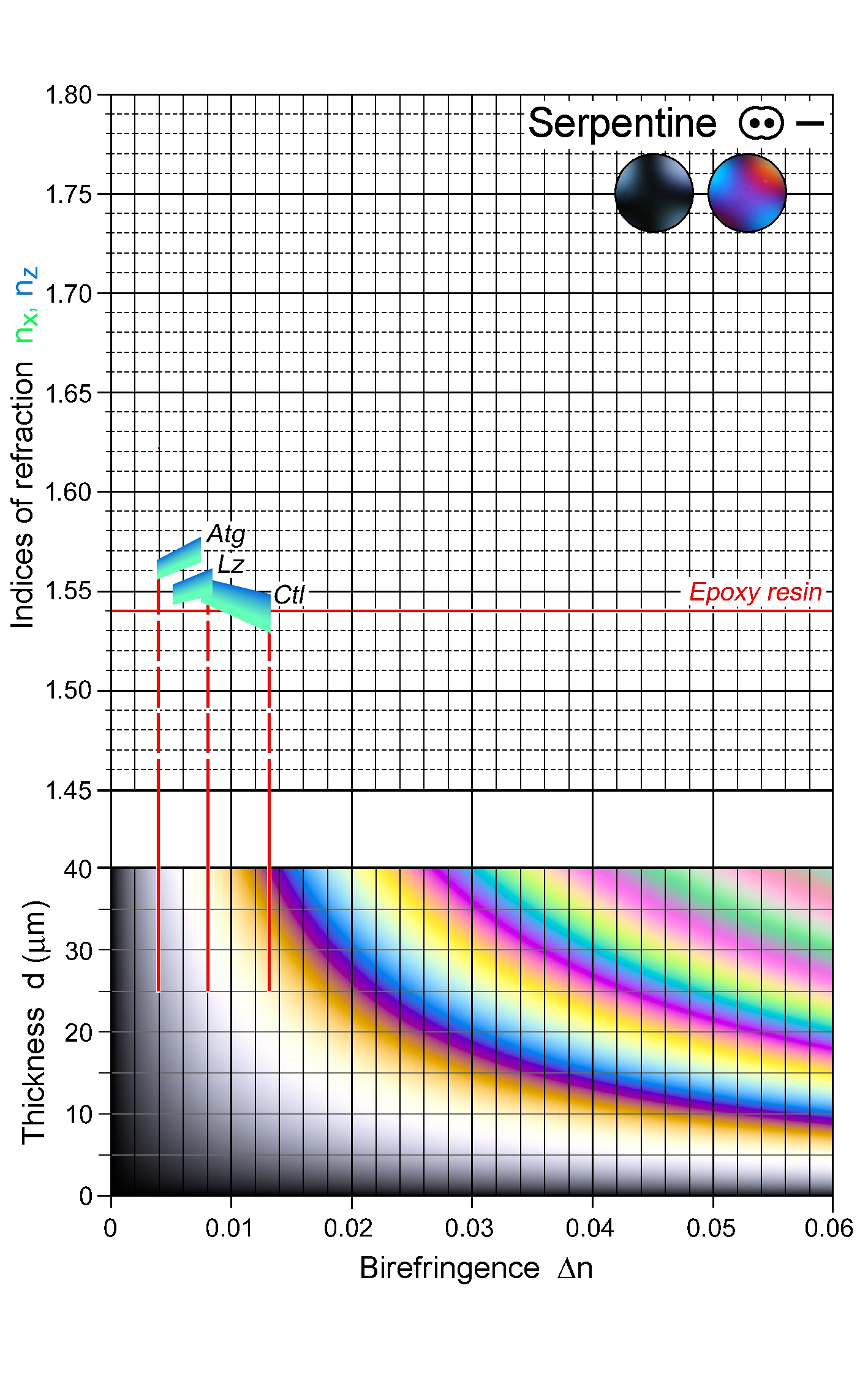|
| Formula | Mg3Si2O5(OH)4 |
| | Optic class & sign | Biaxial negative |
| | Optical orientation | X = c, Y = a or b, Z = b or a |
| | Optical plane | (010) |
| | Relief | Low-negative to moderate-positive |
| | Refractive indices | nx = 1.529 -1.595
|
|
ny = 1.530 -1.603
|
|
nz = 1.537 -1.604
|
|
| |
| | Birefringence (max.) | 0.004 - 0.014 |
| | | |
| | Optic Angle
| 2Vx
= 20 - 80° |
| | 2Vz
|
| | Sign of elongation | Length-slow, l (+) and length-fast, l (-) |
| | Interference figure | Commonly difficult to obtain due to fine grain size |
| | Colour / pleochroism | Colourless to pale green with weak pleochroism. Brown staining from oxidized Fe may occur. |
| | Zoning | |
|
|
| Form | Habit | Flaky (antigorite), fibrous or asbestiform (rolled-up sheets: chrysotile), very fine-grained, parallel-stacked scaly aggregates (“pseudo-fibres’: lizardite) |
| | | Surface | Subhedral, anhedral |
| | Cleavage | {001} perfect; only visible in antigorite |
| | Twinning | Commonly not identifiable |
| | Extinction | Straight to {001} |
|
|
| Reaction textures | Hydration of mafic minerals: Mesh texture and banded serpentine (pseudomorphs after olivine mimicking fracture patterns), ‘bastite’ (pseudomorphs after pyroxene). |
| | Alteration / decomposition | Serpentine is a typical alteration product itself |
|
|
| Occurence | Ign | |
| | | Met | Metamorphosed, hydrated ultramafic rocks. Chrysotile and lizardite are stable from sub-metamorphic temperatures to amphibolite-facies conditions |
| | | Sed | |
| | | Hyd | Hydrous alteration of ultramafic and mafic rocks |
| | | Other | |
|
|
| Distinctive properties | Habit, very low Δn, occurrence; characteristic replacement textures from olivine and pyroxene breakdown. |
| | Additional comments | Distinction between the different serpentine varieties may be difficult using optical means only. Interlocking crystals of distinct size are typical for antigorite, while a fibrous habit indicates chrysotile. Lizardite tends to be rather fine-grained, forming the pseudomorphic textures. |
|
|

 Images
Images 



 Images
Images 

